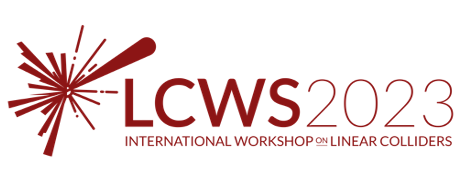Speaker
Description
Future colliders will require injector linacs to accelerate large electron bunches over a wide range of energies. For example the Electron Ion Collider requires a pre-injector linac from 4 MeV up to 400 MeV over 35 m [1]. Currently this linac is being designed with 3 m long traveling wave structures, which provide a gradient of 16 MV/m. We propose the use of a 1 m distributed coupling design as a potential alternative and future upgrade path to this design. Distributed coupling allows power to be fed into each cavity directly via a waveguide manifold, avoiding on-axis coupling [2]. A distributed coupling structure at S-band was designed to optimize for shunt impedance and large aperture size. This design provides greater efficiency, thereby lowering the number of klystrons required to power the full linac. In addition, particle tracking analysis shows that this linac maintains
lower emittance as bunch charge increases to 14 nC and wakefields become more prevalent. We present the design of this distributed coupling structure, as well as cold test data and plans for higher power tests to verify on the structure’s real world performance.
[1] F. Willeke, “Electron ion collider conceptual design report 2021,” tech. rep., United States, 2021.
[2] S. Tantawi, M. Nasr, Z. Li, C. Limborg, and P. Borchard, “Design and demonstration of a distributed-coupling linear accelerator structure,” Phys. Rev. Accel. Beams, vol. 23, p. 092001, Sep 2020.



